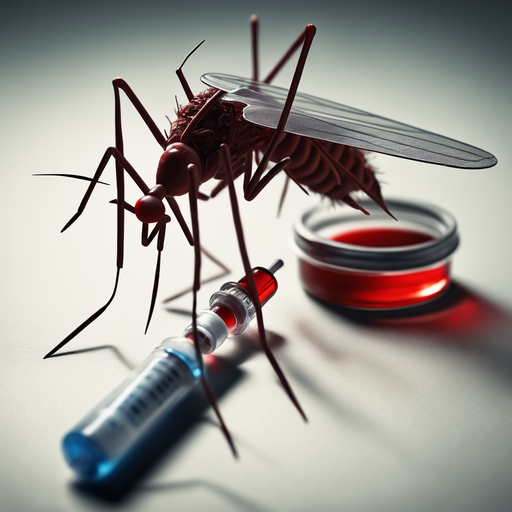Lions, tigers, bears? Afraid not. Those are not even on the radar. Here are the four most dangerous animals on Earth:
4th Most Dangerous Animal: Dogs
Dogs, those loyal companions that have stood by our side for millennia, can be a source of great danger. Breeding for specific traits has given us everything from fluffy lapdogs to powerful guard dogs. And any of them can snap off your nose whenever they feel a little blue.

Native dogs were already born to pack-forming and extreme aggression. We’ve made the problem even worse by creating breeds that are even more dangerous. Then we’re surprised when they lash out. It’s like putting a loaded gun in a toddler’s hands and then acting shocked when they accidentally shoot someone.
That lovable family dog can eat your kids’ face off in a second if they take a notion. And, they often do. We’ve all heard the famous words, “Oh, he doesn’t bite.” Well, not until he does. All dogs bite. That’s what they do.
The dog can turn into a deadly adversary in many situations. Dog-related fatalities occur frequently in various parts of the world. People often hear “…oh, they don’t bite” as the last words while they are eaten alive by a pack of crazed blood-sniffing hounds.
Numbers Killed: The World Heath Organization reports that dogs are responsible for an estimated 25,000 to 35,000 deaths per year. These fatalities result from dog attacks and the transmission of diseases like rabies.
Geographical Range: Dogs are one of the most widely distributed domesticated animals, inhabiting virtually every country. Dog-related fatalities occur in diverse regions. From the shacks in the hills of Tennessee to the fancy mega-mansions on Cape Cod. And, if he’s not killing you, he’s always stinking up the house.
Deadliness of Attacks: Dog-related deaths result from a combination of factors, including innate dog behavior, healthcare accessibility, and irresponsible ownership. Rabies transmission, often through dog bites, remains a significant concern in regions without adequate vaccination programs. You may live in a country with reasonable health standards. Buts a dog bite will ensure you have to undergo a series of painful rabies shots.
3rd Most Dangerous Animal: Snakes
Snakes, with their stealthy and venomous attacks, are feared by many. Their deadly strikes occur across various regions of the world.

Nothing strikes fear into the hearts of humans like the thought of snakes burrowing down in their beds. They can emerge from your toilet at midnight. They will wait patiently on the floor in the dark when you head to the kitchen at 3AM for a quick snack.
Numbers Killed: Snakebites result in approximately 138,000 deaths annually, as reported by the World Health Organization. That does not count the number of hands, feet, arms, and legs that have to be amputated, which is considerable.
Geographical Range: Snakes are found on every continent except Antarctica. They inhabit a wide range of environments. From dense jungles to arid deserts, making their attacks possible in just about place on Earth. But, it’s the everyday toilet snakes that inspire the most fear.
Deadliness of Attacks: Snakebite fatalities can be tragic, and they can be particularly painful and violent. Prompt access to antivenom can sometimes prevent deaths, underscoring the importance of healthcare infrastructure. But since all regions are affected, this is a ridiculous statement. Snakes are clearly the third most dangerous animals.
2nd Most Dangerous Animal: Humans
Oh, the irony of it all! We humans are often considered the most advanced species on Earth. But we’ve also earned a reputation as one of the most dangerous. We’re the only species that wages wars over ideologies, and builds weapons of mass destruction. Sometime we feel a little low. We think killing sixty or eighty other random people would help us feel less blue. As long as we stick to killing people we don’t know, we might get away with it for a very long time.

Humans, the supposed apex predators, are paradoxically among the most dangerous animals on Earth. We’re the kings and queens of self-sabotage, turning our intelligence and creativity into tools of destruction. Nuclear weapons and pollution…these are all consequences of our actions. We’re like a child with a magnifying glass, burning ants in the sun, but on a global scale. So, congratulations, humans, you’ve managed to outdo almost all of the rest of nature in the game of murder.
Numbers Killed: Humans are responsible for over 450,000 deaths due to interpersonal violence. This includes homicides and conflicts, according to the Global Burden of Disease Study of 2019. Your neighbor may frequently throw all-night parties. If he also plays extra-loud music from the middle east, this may take things over the top. He might eventually drive even the laid-back among us to violence.
Geographical Range: Humans have colonized nearly every corner of the planet. Our impact on the environment and other species extends worldwide, affecting populations in countless regions. Wherever you find humans, your risk of being killed by one increases astronomically.
Deadliness of Attacks: Humans engage in violence against each other, contributing to a significant portion of our deadly impact. Furthermore, our environmental footprint leads to air pollution and deforestation, indirectly causing harm to other species and ecosystems. These species and ecosystems are all pretty pissed off, and they often fight back — with deadly consequences.
Most Dangerous Animal of All: Mosquitos
You might be thinking, “Really? Mosquitoes?” Yes, really. These bloodsuckers are the deadliest animals on earth. They’re like tiny, airborne vampires with a penchant for spreading disease. Malaria, Zika, Dengue, West Nile Virus—you name it, mosquitoes can transmit it. They’re the world’s deadliest animal, and they don’t even have the courtesy to be intimidating. Plus, they’re very passive-aggressive and sneaky, and no one appreciates those traits.

The seemingly innocuous mosquito packs a deadly punch. While these pesky insects may be small, they’re responsible for an astonishing number of deaths worldwide. According to the World Health Organization (WHO), mosquitoes are responsible for approximately 1 million deaths each year. This makes them most dangerous animals on earth, by far.
Mosquitoes transmit a variety of deadly diseases, with malaria topping the list as one of the most lethal. Malaria alone claims the lives of over 400,000 people annually, mostly in sub-Saharan Africa. Other mosquito-borne diseases like Zika, Dengue fever, and West Nile Virus contribute to the staggering death toll caused by these tiny terrors.
The mosquito, often dismissed as a mere nuisance, is THE world’s deadliest creature. Its attacks are global in scale, affecting a wide geographical range. Mosquitoes are found on every continent except Antarctica, and their death-itch impact is felt everywhere they roam. We could easily kill off all of the biting varieties, but now they have been unofficially labeled a protected species.
Little-known facts: 1. Only female mosquitos bite. 2. Many mosquitos specialize in biting other animals, and don’t bite humans. 3. Mosquitos have a very limited range, two to three miles. 4. Mosquitoes locate you by sniffing the carbon dioxide (CO2) you exhale.
Numbers Killed: Mosquitoes are responsible for approximately 1 million deaths annually worldwide. This makes them the number one deadliest creature on the planet.
Geographical Range: Mosquitoes inhabit almost every corner of the world, from tropical rain forests to arid deserts. They thrive in regions with warm, moist climates. They also thrive in birdbaths, empty tin cans, flowerpots, and old tires. They’re a galling threat to billions of people. We don’t deserve mosquitos.
Deadliness of Attacks: These tiny terrors transmit a range of deadly diseases such as malaria. Other mosquito-borne diseases like Zika, Dengue fever, and West Nile Virus add to the death toll. This clearly demonstrates the global reach of their lethal attacks.
